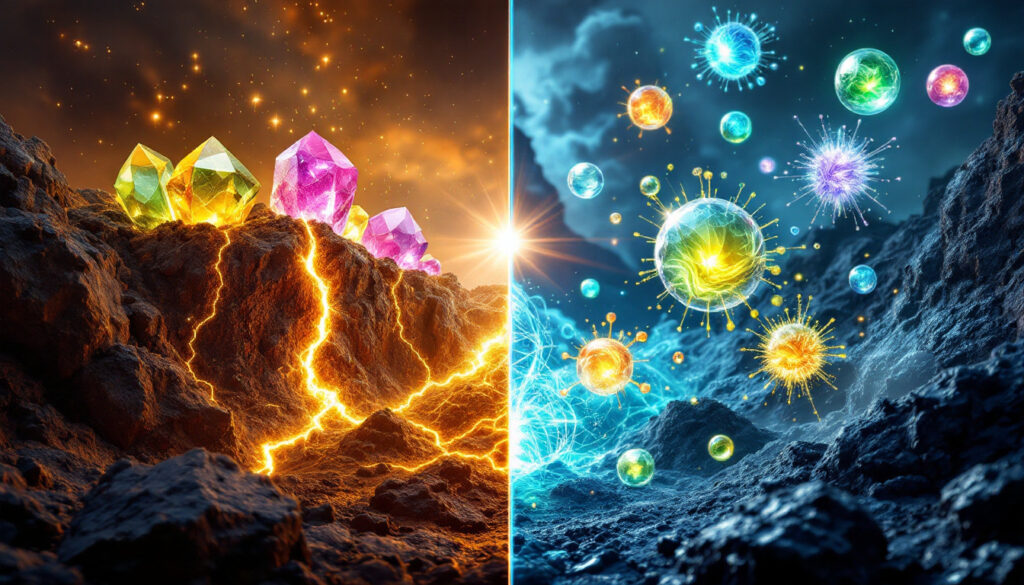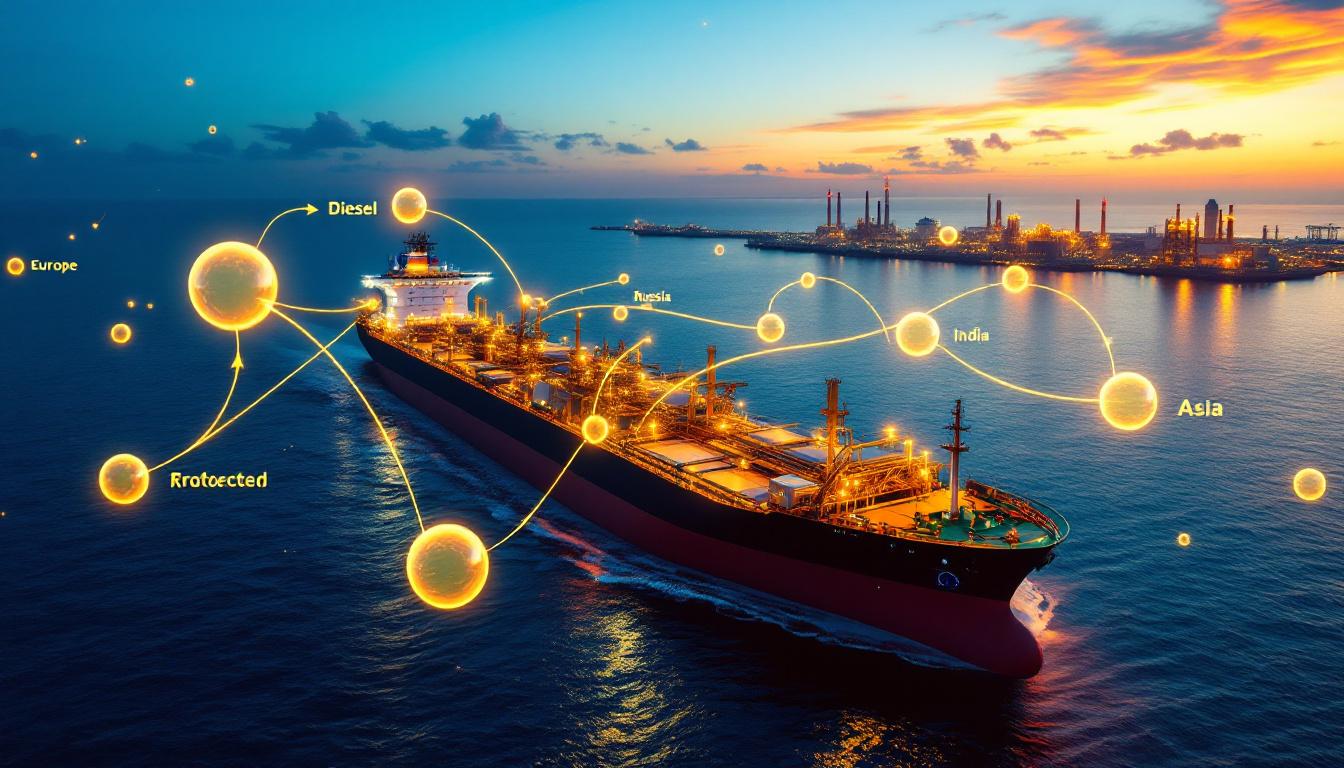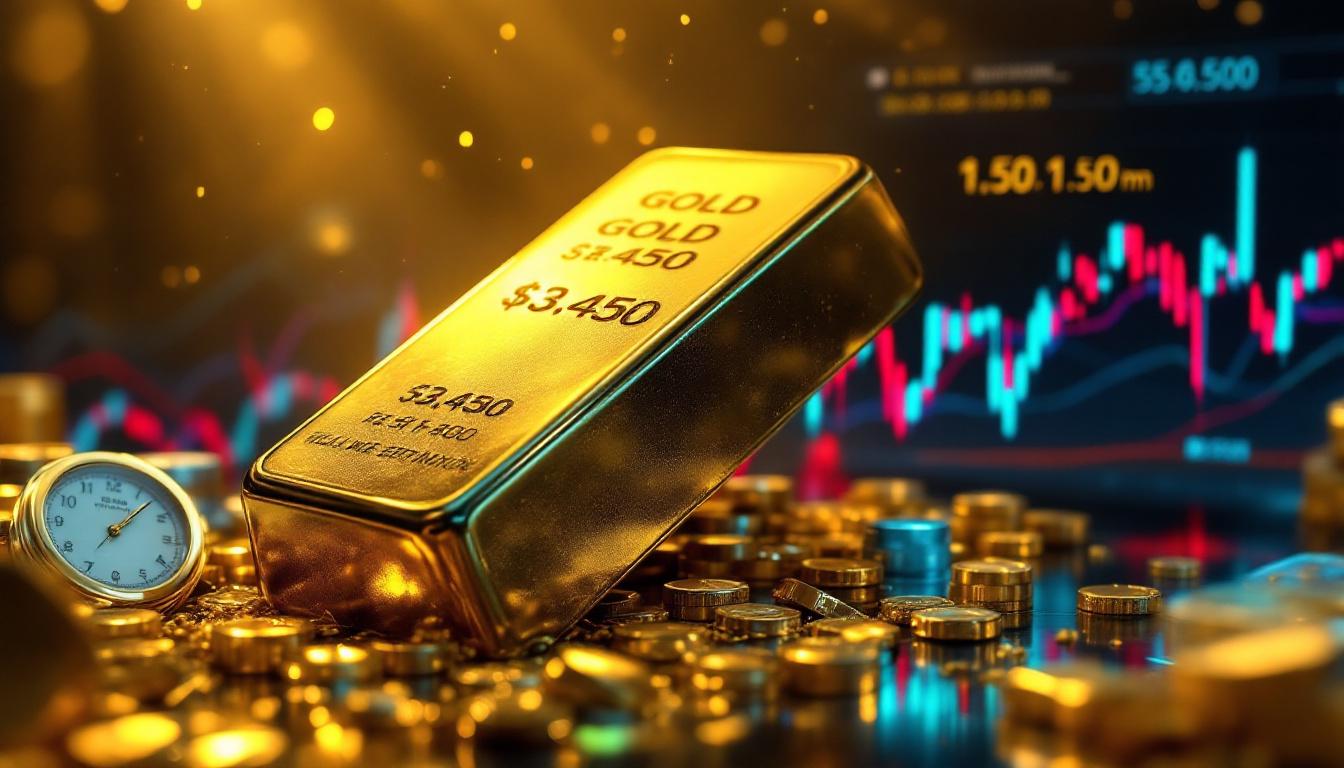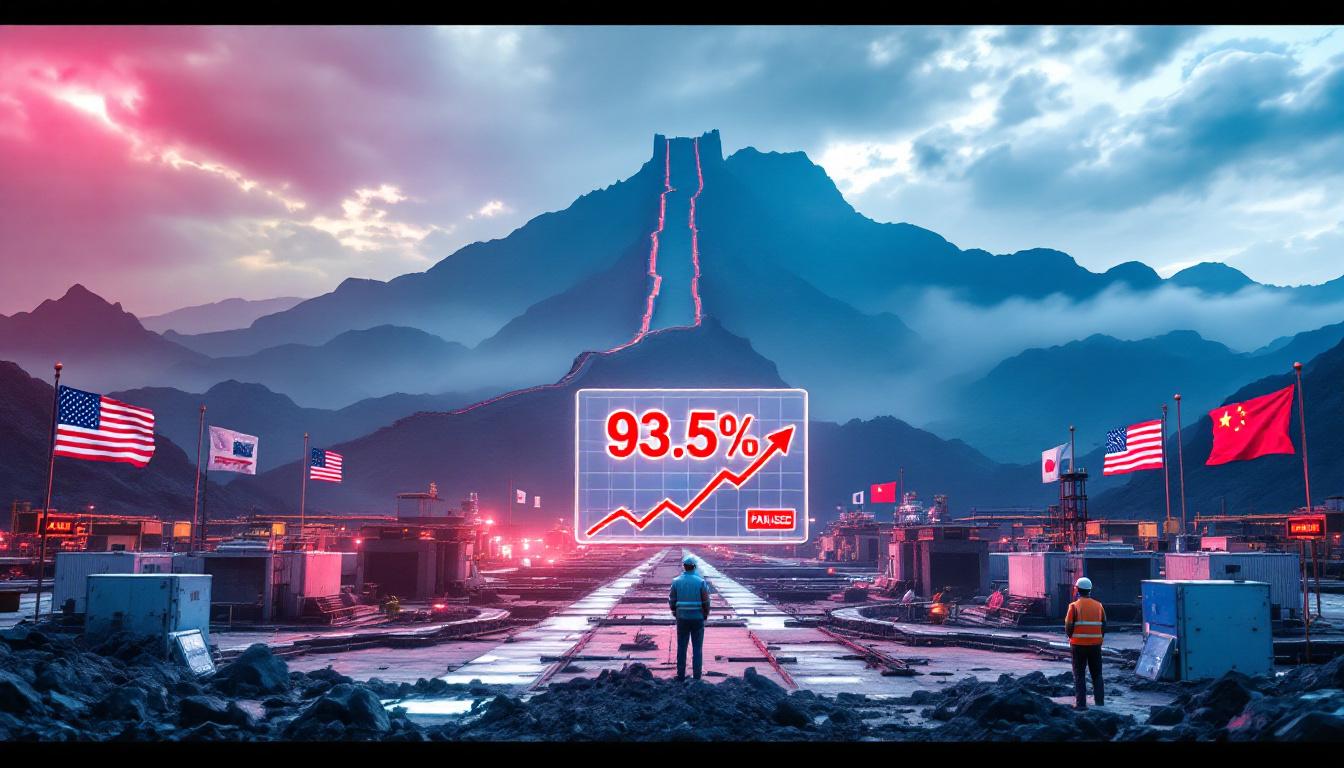Understanding Rare Earth Elements and Processing Challenges
Rare earth elements (REEs) comprise a group of 17 elements on the periodic table, including the 15 lanthanide series plus Scandium (Sc) and Yttrium (Y). Despite their name, these elements aren't particularly rare in the Earth's crust. What makes them challenging is finding them in concentrations economically viable for extraction and developing the sophisticated processing technology required to separate them.
Three elements within this group—Dysprosium (Dy), Neodymium (Nd), and Praseodymium (Pr)—have become particularly critical in modern technology. These elements are essential components in permanent magnets that power everything from smartphones to electric vehicles and wind turbines.
"Rare earths are not actually rare," explains industry expert Amanda van Dyke. "The challenge isn't finding them but processing them effectively. Their distribution across the Earth's crust is relatively abundant compared to precious metals like gold or platinum."
What Are Rare Earth Elements?
Rare earth elements play a crucial role in numerous high-tech applications. Their unique electromagnetic properties make them irreplaceable in technologies that require strong, lightweight permanent magnets. These magnets are fundamental to the miniaturization of electronics and the efficiency of renewable energy technologies.
The global importance of REEs continues to grow as countries transition to green energy technologies. Wind turbines can contain up to 600kg of rare earth elements per megawatt of capacity, while each electric vehicle requires approximately 1-2kg of these critical materials.
The unique properties of REEs make them difficult to substitute without significant performance losses. Scientists have spent decades trying to develop alternatives, but the electromagnetic properties of elements like neodymium remain unmatched for many applications.
Why Aren't Rare Earth Elements Actually Rare?
Global mining production of REEs reached approximately 400,000 tonnes in 2024, with proven reserves worldwide estimated at 90 million tonnes—225 times more than annual production. Geological assessments suggest that total resources may be double the proven reserves, with deposits found across multiple continents.
China holds approximately 37% of global rare earth reserves, followed by Vietnam (18%), Brazil (17%), and Russia (10%). The United States, Australia, and India also possess significant deposits. Despite this widespread distribution, mining operations remain concentrated in a few countries due to processing challenges.
"Their concentration is rare," notes mining engineer Michael McClintock. "Finding upgraded deposits with economically viable concentrations is where the challenge lies. The geology is complex, with rare earths often intermingled with radioactive elements like thorium and uranium."
The critical insight about rare earth elements isn't their scarcity but rather the sophisticated technical expertise required to process them efficiently and economically. This processing challenge has created a significant bottleneck in the global rare earth supply chain.
The Rare Earth Processing Challenge
Rare earth processing represents one of the most complex challenges in modern metallurgy. The similar chemical properties of these elements make separation difficult, requiring precise chemical processes developed through years of research and refinement.
How Are Rare Earths Processed?
Mines typically produce what's called "mixed rare earth concentrate," containing all 17 elements in varying proportions. This concentrate has no direct commercial application without further processing to isolate individual elements.
The most common separation method is the "acid bake" or "acid crack" technique. This process involves treating the concentrate with precisely calibrated acids at extremely high temperatures (500-600°C) in specialized titanium crucibles. The process requires multiple processing cycles and consumes approximately 200 gigajoules of energy per tonne of processed material.
After the initial acid treatment, separation continues through solvent extraction and ion exchange processes. Each step requires 10-15 stages to achieve the 99.9% purity needed for high-tech applications. The process is energy-intensive and generates significant waste streams that require careful management.
The Lynas Corporation, Australia's rare earth processor, uses a cracking furnace in Malaysia as part of its separation process, while MP Materials is testing hydrochloric acid dissolution methods at its Texas facility.
Why Is Processing So Difficult?
Processing rare earths is challenging for several reasons. First, it requires breaking complex molecular structures unique to each deposit. The chemical composition of rare earth ores varies significantly between mining sites, requiring customized processes for each source.
"Processing is complex chemistry," explains van Dyke. "China's 90% control of global processing isn't accidental—they've invested decades in perfecting these techniques."
Environmental challenges further complicate processing. The chemical procedures generate acidic waste streams and can release radioactive byproducts when thorium and uranium are present in the ore. Western countries face significant regulatory hurdles due to these environmental concerns.
Industry analyst John A. Hunsaker notes that "environmental NIMBYism significantly slows Western processing growth. While China accepted these impacts decades ago, developed nations struggle with the mining ESG challenges and environmental trade-offs."
The capital investment required for processing facilities is substantial. A mid-sized processing plant capable of handling 5,000-10,000 tonnes annually requires approximately $1 billion in investment before producing a single kilogram of separated rare earths.
Global Control of Rare Earth Processing
The global rare earth supply chain remains heavily concentrated, creating strategic vulnerabilities for many technology-dependent economies.
China's Dominance in the Rare Earth Supply Chain
China controls approximately 90% of global rare earth processing capacity and produces 68% of mixed rare earth oxides. This dominance extends beyond raw materials to higher-value segments—China manufactures 90% of the world's permanent magnets.
In recent years, China has implemented export controls specifically targeting metals and processing technology rather than raw oxides. Van Dyke explains the strategic significance: "China's export controls target metals, not oxides… That's the secret sauce where the value lies."
China's Baotou region represents the global epicenter of rare earth processing and magnet production, with vertically integrated operations handling everything from mining to finished products. This integration provides significant cost advantages and technical synergies that competitors struggle to match.
The country's dominance provides substantial geopolitical leverage. As global tensions rise, particularly around Taiwan, supply chain vulnerabilities have become a significant strategic concern for Western nations dependent on Chinese rare earth processing.
Non-Chinese Processing Capabilities
Lynas Corporation stands as the only significant non-Chinese commercial processor of rare earth elements. The Australian company is investing $500 million in its Kalgoorlie processing plant, targeting completion by 2026. MP Materials, operating from California, is developing processing capabilities in Texas, currently handling approximately 1,000 tonnes annually in laboratory-scale operations.
Laboratory-scale processing exists in multiple countries, but commercial viability remains elusive. Brazil's Federal University of Santa Catarina is conducting promising research on magnet development. According to researcher Victor Hugo Martins Cruz, "Brazil aims to surpass Chinese magnet quality through eco-friendly processing methods."
In South Africa, Rainbow Rare Earths is developing an innovative approach to extract rare earths from gypsum waste. Industry consultant Eddy Berridge believes "South Africa's gypsum extraction could potentially disrupt China's dominance if scaled successfully."
Japan maintains approximately 10% of the global permanent magnet market, largely relying on recycled materials and imported processed rare earths from China. The Japanese government has established strategic reserves of critical rare earths to mitigate supply disruptions.
The Economics of Rare Earth Elements
The rare earth value chain demonstrates extraordinary value multiplication at each processing stage, highlighting why control of processing technology is so economically significant.
Value Chain of Rare Earth Elements
The global market for mixed rare earth oxides (the initial processed product) stands at approximately US$2-3 billion as of 2024. Moving up the value chain, processed magnet metals (primarily Nd, Pr, and Dy) represent a US$9 billion market.
The permanent magnets market, where these processed metals find their primary application, reaches US$53 billion annually. With a growth rate between 8-10% yearly, this market is expanding rapidly as clean energy technologies proliferate globally.
This value multiplication—from approximately $40/kg for mixed oxides to $1,200+/kg for finished magnets—demonstrates why controlling the processing technology provides such significant economic advantages. The value multiplies approximately 30 times from ore to finished magnet.
The recycling potential remains largely untapped, with less than 1% of rare earth elements currently recovered from end-of-life products. Apple's 2025 pledge to use 100% recycled REEs in its products signals growing corporate attention to this opportunity.
Why Are Processed Rare Earths So Valuable?
The processing technology represents the "special ingredients" and "secret sauce" that transforms relatively low-value mixed concentrates into critical industrial inputs. Without these processed materials, manufacturers of everything from smartphones to wind turbines face existential challenges.
"Without processed REEs, electronics manufacturers are toast," states van Dyke bluntly. The strategic importance extends beyond economic value to national security, with the U.S. Defense Logistics Agency stockpiling 5,000 tonnes of NdPr for critical military applications.
Price volatility creates additional economic challenges. The 2022 neodymium price spike demonstrated how speculators and supply constraints can drive rapid inflation in critical material costs, affecting everything from consumer electronics to electric vehicle prices.
Some manufacturers are adapting to these economic pressures. Tesla has shifted to dysprosium-free motors to reduce costs and supply chain vulnerability, though this approach involves performance trade-offs. Similarly, researchers continue exploring synthetic alternatives like ferrite magnets, though these typically deliver lower performance than rare earth-based options.
Building Western Processing Capacity
Breaking China's near-monopoly on rare earth processing requires coordinated efforts across multiple fronts, from basic research to commercial-scale production facilities.
What's Needed to Break China's Processing Monopoly?
Developing domestic processing technologies stands as the primary challenge. While the basic chemical processes are understood, optimizing them for specific ore compositions requires extensive research and development. Artificial intelligence is increasingly applied to optimize separation processes, potentially reducing costs and environmental impacts.
Construction of processing facilities outside China represents a substantial capital investment. Each facility requires specialized equipment, including acid-resistant titanium vessels and precision-controlled chemical systems that few manufacturers can produce.
The technical workforce presents another bottleneck. Chemical engineers with expertise in rare earth separation are scarce outside China, creating a human capital challenge alongside the technological and financial hurdles.
Environmental management solutions for processing byproducts remain critical for Western facilities to achieve regulatory approval. Lynas Corporation's experience in Malaysia demonstrates the challenges, with the company implementing comprehensive waste management systems to address local concerns.
Current Western Initiatives
MP Materials continues developing processing capabilities in Texas, though commercial-scale production remains years away. The company aims to create a fully integrated supply chain from its Mountain Pass mine in California to finished magnets produced in America.
University research programs are exploring more efficient separation methods. The U.S. Department of Energy's Critical Materials Institute is developing roadmaps for domestic production, while the EU's Horizon Europe program funds research into ionic liquid extraction methods that could reduce environmental impacts.
Brazil's research into environmentally-friendly separation techniques shows promise. According to Cruz, "Brazil's research focuses on eco-friendly methods that could redefine industry standards."
Australia's Arafura Rare Earths continues developing its Nolans Project, which would integrate mining and processing operations. The project exemplifies the growing recognition of rare earths' strategic importance in the critical minerals race driving investment despite the substantial capital requirements.
FAQ: Rare Earth Processing
Are rare earth elements actually rare in nature?
No, rare earth elements are relatively abundant in the Earth's crust. The term "rare" reflects the historical difficulty in chemically isolating these elements rather than their actual abundance. Cerium, the most common rare earth element, is more abundant than copper. The challenge lies in finding economically viable concentrations and developing the processing capabilities to extract and separate them efficiently.
Why does China dominate the rare earth processing industry?
China invested strategically in rare earth processing beginning in the 1980s when other nations showed limited interest. They accepted environmental impacts that Western countries were unwilling to tolerate, developed comprehensive technical expertise, and built integrated supply chains. Their early-mover advantage provided economies of scale and technical knowledge that competitors now struggle to match. Additionally, government subsidies and strategic planning helped cement China's dominant position.
What are the environmental concerns with rare earth processing?
Processing rare earths typically involves strong acids, high temperatures, and potentially toxic byproducts. The environmental challenges include managing chemical waste, preventing groundwater contamination, and dealing with radioactive elements often found alongside rare earth deposits. Each tonne of processed rare earths can generate up to 2,000 tonnes of waste material. Addressing these concerns requires sophisticated waste management systems that add significantly to production costs outside China.
How long would it take to develop Western rare earth processing capacity?
Building commercial-scale processing facilities outside China would likely take 5-7 years from initial planning through construction, testing, and scaling to full production. With sufficient investment and regulatory support, pilot facilities could begin operating within 3-5 years. However, achieving cost-competitive processing at scales matching Chinese capacity could take a decade or more without significant technological breakthroughs.
What is the strategic importance of rare earth elements?
Rare earth elements are critical components in technologies essential for the green energy transition, defense systems, and modern electronics. A single F-35 fighter jet contains nearly 420 pounds of rare earth materials. As geopolitical tensions increase, nations are recognizing that control over these materials provides significant leverage in international relations. Beyond their direct economic value, they represent a strategic vulnerability for technology-dependent economies that lack domestic processing capacity. Furthermore, digital transformation in mining may create new opportunities for improving rare earth processing efficiency.
Looking for the Next Major Mineral Discovery?
Discovery Alert's proprietary Discovery IQ model provides real-time notifications of significant ASX mineral discoveries, transforming complex geological data into actionable investment insights. Explore why historic discoveries have generated substantial returns by visiting the Discovery Alert discoveries page and position yourself ahead of the market with your free 30-day trial.




